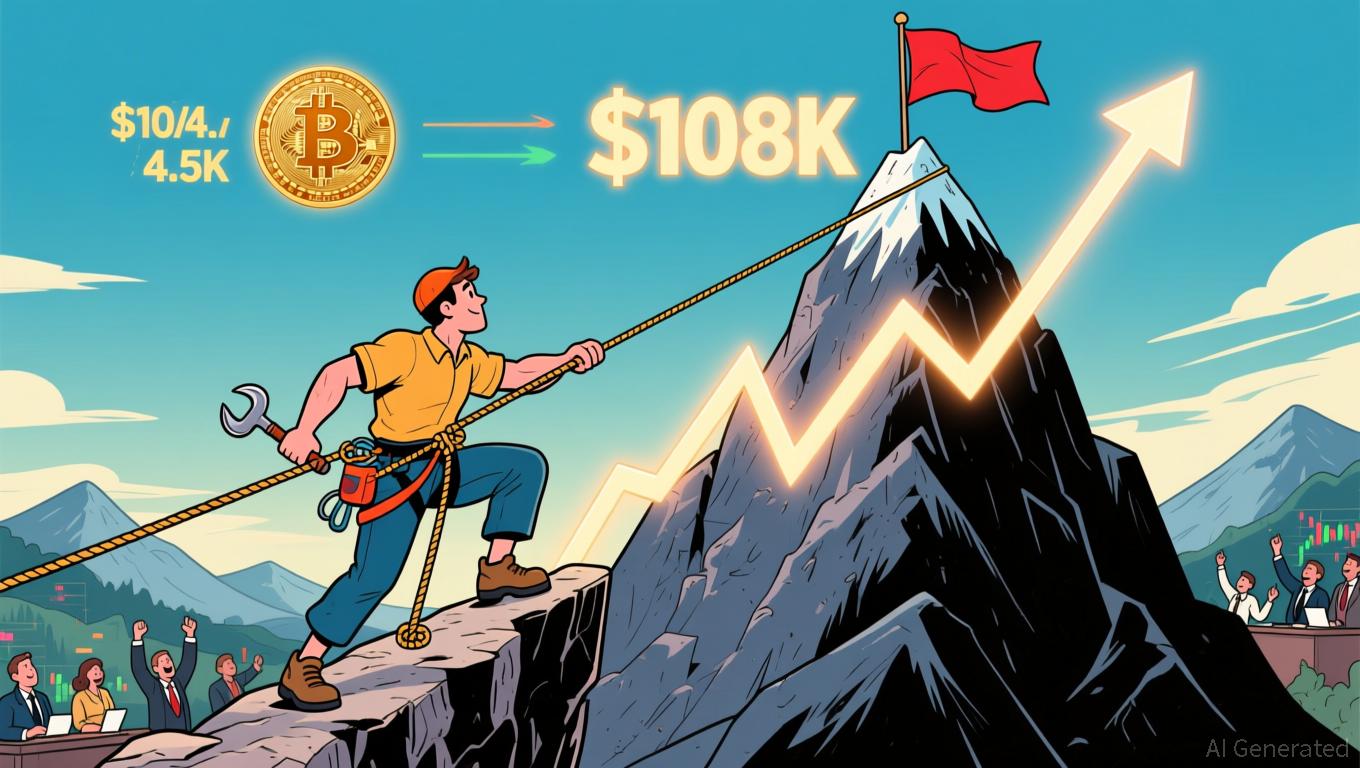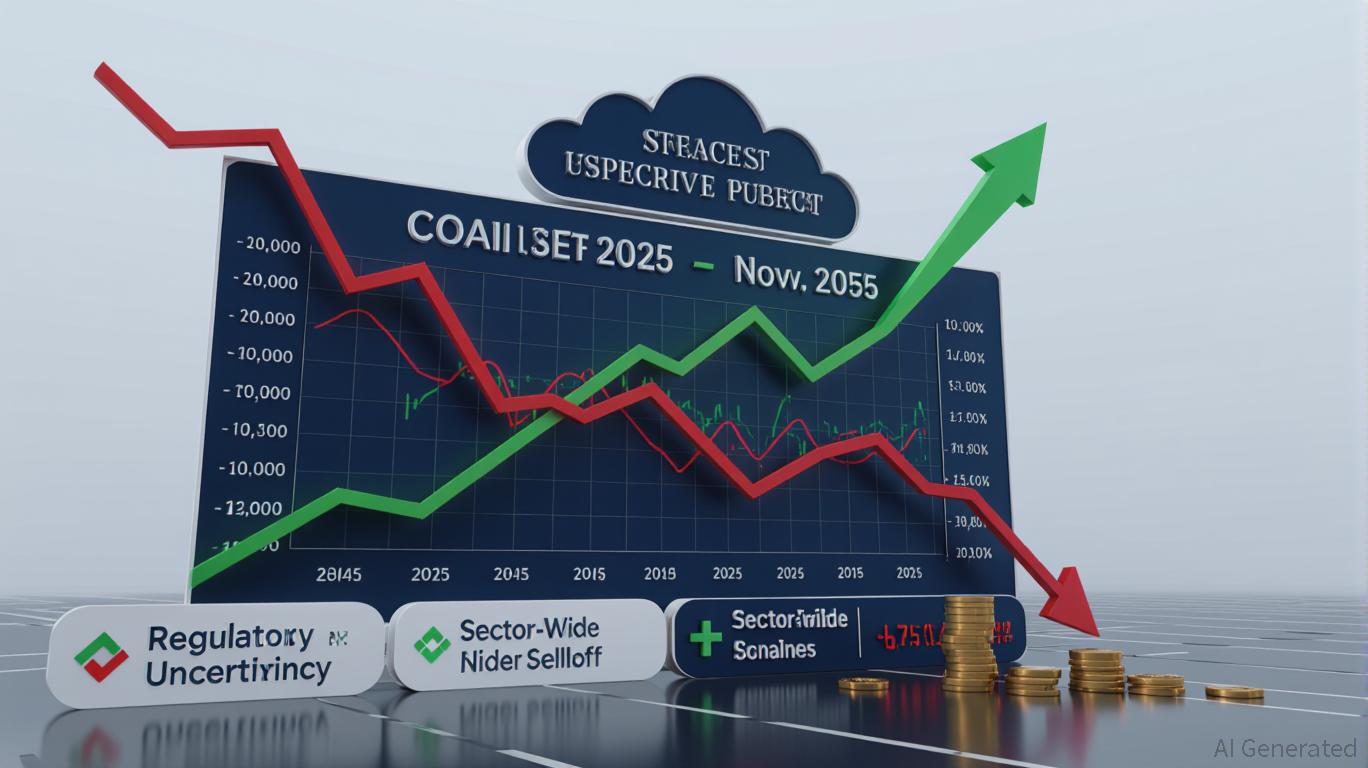SEC's Token Classification Seeks to Harmonize Innovation with Safeguarding Investors
- The SEC proposes a token taxonomy under the Howey Test to classify digital assets as securities or non-securities, reshaping crypto regulation. - The framework categorizes tokens into four tiers, including securities, digital commodities, collectibles, and tools, with exemptions for non-SEC-regulated platforms. - It aligns with the Digital Asset Market Structure Bill, which assigns major cryptocurrencies to CFTC oversight and mandates exchange function separation. - The SEC emphasizes strict enforcement
The U.S. Securities and Exchange Commission (SEC) is moving forward with efforts to create a "token taxonomy" based on the Howey Test, with the goal of clarifying which digital assets are considered securities and which are not subject to its oversight. During a speech at the Federal Reserve Bank of Philadelphia's Fintech Conference on November 12, SEC Chairman Paul Atkins introduced a four-level classification system intended to separate securities tokens from non-securities tokens—a development that could significantly impact crypto regulation, as
Atkins explained that the taxonomy would sort tokens into several categories: digital commodities or network tokens linked to decentralized platforms, digital collectibles such as art or in-game assets, digital utilities like memberships or event tickets, and tokenized securities that represent financial stakes. Only the last group—tokens that function as investment contracts—would continue to fall under securities laws, while the rest would be exempt, according to a
An important feature of the plan is the acknowledgment that tokens initially sold as securities might lose that status as projects become more decentralized and the issuer's involvement decreases.

The proposed framework also provides exceptions for certain tokens, permitting them to be traded on platforms regulated by the Commodity Futures Trading Commission (CFTC) or by state authorities, rather than limiting them to SEC-supervised exchanges. Atkins maintained that this would encourage technological advancement while still protecting investors. "We shouldn't restrict innovation and investor options by forcing assets to trade only in a single regulatory setting," he stated, according to a
This initiative works alongside broader legislative measures in Congress, such as the Digital Asset Market Structure Bill, which aims to clearly define the regulatory responsibilities of the SEC and CFTC. The bill, which is currently under consideration in both the Senate and House, would designate leading cryptocurrencies like
Atkins made it clear that the taxonomy does not indicate a relaxation of enforcement. He warned that fraudulent activities and market manipulation would continue to be met with strict consequences, reaffirming the SEC's dedication to "integrity and clarity" in the digital asset sector, as mentioned in a
Industry participants have responded positively, viewing the move as progress toward clearer regulations. By introducing a well-defined framework, the SEC seeks to strike a balance between fostering innovation and safeguarding investors—a challenge that has been central to crypto regulation from the start. The adoption of this taxonomy could also set a precedent for international standards, as other countries face similar classification challenges.
Disclaimer: The content of this article solely reflects the author's opinion and does not represent the platform in any capacity. This article is not intended to serve as a reference for making investment decisions.
You may also like
Bitcoin News Today: Bitcoin Poised for Major Move: Will It Surge or Plunge at $108K?
- Bitcoin consolidates near $104.5K, below $108K resistance, as tightening Bollinger Bands signal potential breakout. - A $108K+ break could drive BTC to $110K-$112K with ETF inflows and reduced miner selling pressure supporting accumulation. - Failure to hold $104K support risks a pullback to $100.5K, with soft ETF demand or renewed miner sales as key triggers. - Solar stocks like Emeren and Canadian Solar draw equity market attention amid mixed earnings and debt concerns.

Tokenized Equities Climb to $10 Billion, Putting Regulators in a Legal Gray Area
- Kraken's xStocks platform, a joint venture with Backed, surpassed $10B in transaction volume four months post-launch, tokenizing equities like Tesla and Meta . - The platform enables 24/7 trading and fractional ownership across Ethereum , Solana , BNB Chain, and Tron , with $2B in onchain activity and 45,000 holders. - Legal ambiguity persists as tokenized stocks are treated as derivatives, not direct securities, with experts warning of liquidity risks and regulatory challenges. - Kraken's cautious focus
Bitcoin Updates: Dubai Court's $456 Million Asset Freeze Marks a Turning Point in International Crypto Regulation
- Dubai's Digital Economy Court froze $456M in TrueUSD reserves, alleging mismanagement by Aria Commodities, a firm controlled by Matthew Brittain. - Funds were transferred via Hong Kong-based First Digital Trust between 2021-2022, sparking legal disputes over whether reserves were converted to illiquid assets. - The ruling underscores global regulatory focus on stablecoin transparency, as Techteryx claims constructive trust while Aria faces scrutiny over opaque transactions. - Trump-linked entities like A

COAI's Sudden Price Decline: Managing Immediate Fluctuations and Sustained Strength
- COAI Index fell 54% by November 2025 due to C3.ai's $116.8M loss, lawsuits, and regulatory uncertainty from the CLARITY Act. - Short-term selloffs were amplified by sector-wide risk aversion, though Binance's smart money account profited $3.125M from COAI trades. - Long-term resilience stems from 50+ corporate partnerships advancing AI adoption and indirect benefits from rising AI R&D investments in biotech . - Investors must balance regulatory risks with COAI's ecosystem strength, as C3.ai's struggles c
